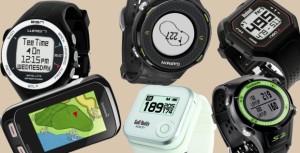George Peper has been writing about golf for what seems like forever. He’s now the editor of Links Magazine and he isn’t shy with his opinions.
Now, he says he loves his GPS watch and I even submitted to modern technology and have my own match box sized GPS. And we both find them useful to a point.
But Peper is upset about how the reliance on our new gadgets has taken our touch…our “sixth sense” out of the game.
But just as we’ve become beneficiaries of all this digital-age assistance, we’ve become its victims. We’ve lost touch. We’ve lost a large measure of whatever each of us possessed of the sixth sense of golf.
What’s the sixth sense? An amalgamation of things—experience and discernment, perception and proprioception, hand-eye coordination and gut instinct. It makes use of the other senses and then goes beyond them, permeating every aspect of the game.
It’s walking to the tee of a hole for the first time, reading the architect’s mind, and knowing exactly where you want to hit your ball. It’s standing in the fairway, looking at the green complex, and sensing where you’ll need to land your ball in order for it to bound and roll out (or spin back) to the hole. It’s more than knowing yardage, it’s dialing-in, selecting your clubs according to the wind on your cheek, the stiffness in your joints, the moisture in the air, even the time of day. It’s having the moxie to play a seemingly outlandish shot—say, a 4-iron from 50 yards—because your lie, the pitch and texture of the green, and the hole location tell you that’s the right shot. It’s looking at a lie in three inches of rough and knowing it’s not a flyer, it’s a floater. It’s looking at a lie in fluffy fringe and knowing how much you have to open the clubface or tweak your angle of attack or the speed of your swing. It’s reading a bunker—or a green—with your feet.
Peper longs for the old school, pre-GPs days when men were men and picked a club based on his naked eye…and maybe a bit of experience.
Harry Vardon never used a range finder, yet from all reports he played some stunningly accurate irons. So did Hogan, Nelson, and Snead. So did Trevino, Miller, and Ballesteros. None of them had electronically generated yardages—just preternatural feel. Name a player on the current PGA Tour who displays that. (Okay, I’ll give you Bubba, and maybe Phil on a good day.) The rest of them—even the best of them—are all but automatons, mechanically playing shots prescribed to them by their caddies. The current poster boy is physics major Bryson DeChambeau, whose Bible, The Golfing Machine, is a Euclidian textbook that defines the golf swing as three zones, 12 segments, and 24 components.
Peper is right. I find myself joining my buddies reaching for my GPS on most every shot and what should be an aide in scoring and in pace of play can sometimes do just the opposite.
I’s like to think I am playing better with the GPS but I don’t see it in my scores. And I’d like to think that not searching for the yard markers any longer would help my regulars play quicker. But I now see us arguing over whose GPS is more accurate, yes like a yard or two really matters. Of course now since I know it’s 160 center, 140 front, 177 back and to reach the bunker is 130 and 139 to clear it I can pick the right club quicker…right. I was probably better off thinking “it’s about 150” and just hitting the damn thing.
But I’ll keep using my GPS, and I’ll try to keep it in my pocket inside 100 yards and rely on my “sixth sense”. Peper may be bitching about our lost skills, but he says he’ll be doing the same, “Don’t get me wrong. I’m neither a complete Luddite nor a complete fool. As I write this, my Garmin Approach S2 is charging. But before I next use it, I’m going to practice my chipping.”
New habits are hard to break.
